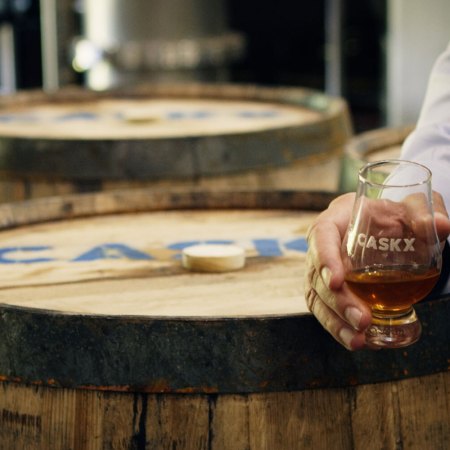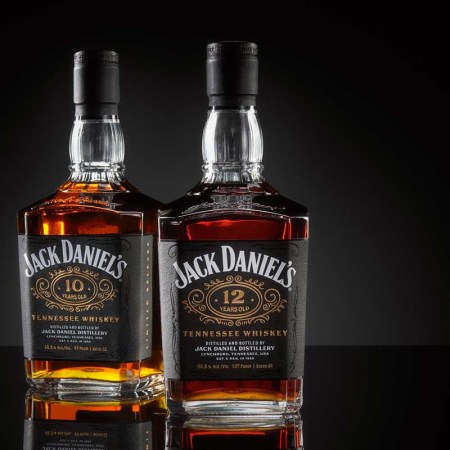The days of gin and tonic, ice-cold beer and the ubiquitous Aperol spritz are numbered. Fall is on its way, and with it, time to ease into cold-weather quaffs.
Whiskey is what gets most of us through the winter, and for those with a taste for bourbon, the options are better than ever. September is National Bourbon Heritage Month, and today we are celebrating the history of a spirit that got its start in opposition to Prohibition: George Remus Bourbon, inspired by a Chicago legend of the same name.
What makes bourbon bourbon? With the real estate devoted to bourbon behind the pine at most bars, it’s assumed most will be aware what this spirit is. But just as some folks think a martini is merely a hefty slosh of their favorite vodka in a stemmed glass (vermouth, anyone?), this all-American hooch ain’t just whiskey. It must be made from a mash of at least 51% corn and aged for at least two years in charred, new oak barrels.
What’s in a name? Just as Johnnie Walker is named after a 19th-century Scottish grocer and Captain Morgan Rum recalls a 17th-century privateer, George Remus honors a historical figure — albeit one not truly honorable. A German immigrant who came to Chicago as a kid, Remus had to leave school at 14 when his father was no longer able to support the family. He didn’t waste any time getting to work, landing his pharmacist’s license while still a teen and owning his own drugstore at 21.
Stepping up to the bar: Not content peddling pills and unguents, Remus went to law school and passed the Illinois Bar in 1900. Before long, he was making big bucks as one of the top criminal-defense attorneys in the Midwest.
Playing both sides: When Prohibition kicked in, Remus made the most of the Volstead Act, including literally memorizing it to better exploit its loopholes. For example, medically prescribed alcohol was permitted under Prohibition. So Remus set up shop in Cincinnati, a prime location to serve cities within a few-hundred-miles radius, buying up distilleries and establishing a drug company. On top of that, he also had his workers hijack trucks loaded with shipments to drugstores and reroute them to a remote Ohio farm where bootleggers and the merely thirsty could get their fix, cash only. He reeled in as much as $79,000 a day.
All good things come to an end: The King of the Bootleggers lost his crown 1922, when the Feds came to call. Charged with 3,000 violations of the Volstead Act, Remus was found guilty by a jury and spent two years in the slammer.
So, what is in a name? Originally produced by Cincinnati’s Queen City Distillery, George Remus Bourbon is now part of the MGP portfolio and made in Lawrenceburg, Indiana. “Our branding ethos is rooted in provenance and authenticity,” says Andy Mansinne, Vice President of Brands. “George Remus was based in Cincinnati, because it was within 200 miles of every shuttered whiskey warehouse in the country, including ours. For us, George Remus represents Prohibition history, entrepreneurship and a certain lifestyle — he was famous for his parties.”
George Remus Bourbon retails for $44.99 for a 750ml bottle. Not the hooch for you? Here are four other Midwestern bourbons upon which to wet your whistle this month …
Koval Single Barrel
Chicago
Made with a mash that includes millet rather than the rye or wheat usually added to the corn, this organic offering took home the gold in the 2014 International Whisky Competition. ($44.99/750 ml)
Few Bourbon
Evanston
Smooth and sweet (in the best way), this bourbon is made by Few Spirits in Evanston, a once-dry town that was a hotbed of the Temperance movement. ($44.99/750 ml)
OYO Sherry-Finished Bourbon
Columbus, OH
Produced by Middle West Spirits, this product is initially aged in American white oak, then transferred to sherry casks where it picks up notes of fruit and dark chocolate. ($99.99/750 ml)
Watershed Bourbon
Columbus, OH
Another Buckeye offering, this double-distilled small-barrel bourbon is made with a bit of spelt in the mash bill. Smooth, light and fragrant. ($42.99/750 ml)
This article was featured in the InsideHook Chicago newsletter. Sign up now for more from the Windy City.





















